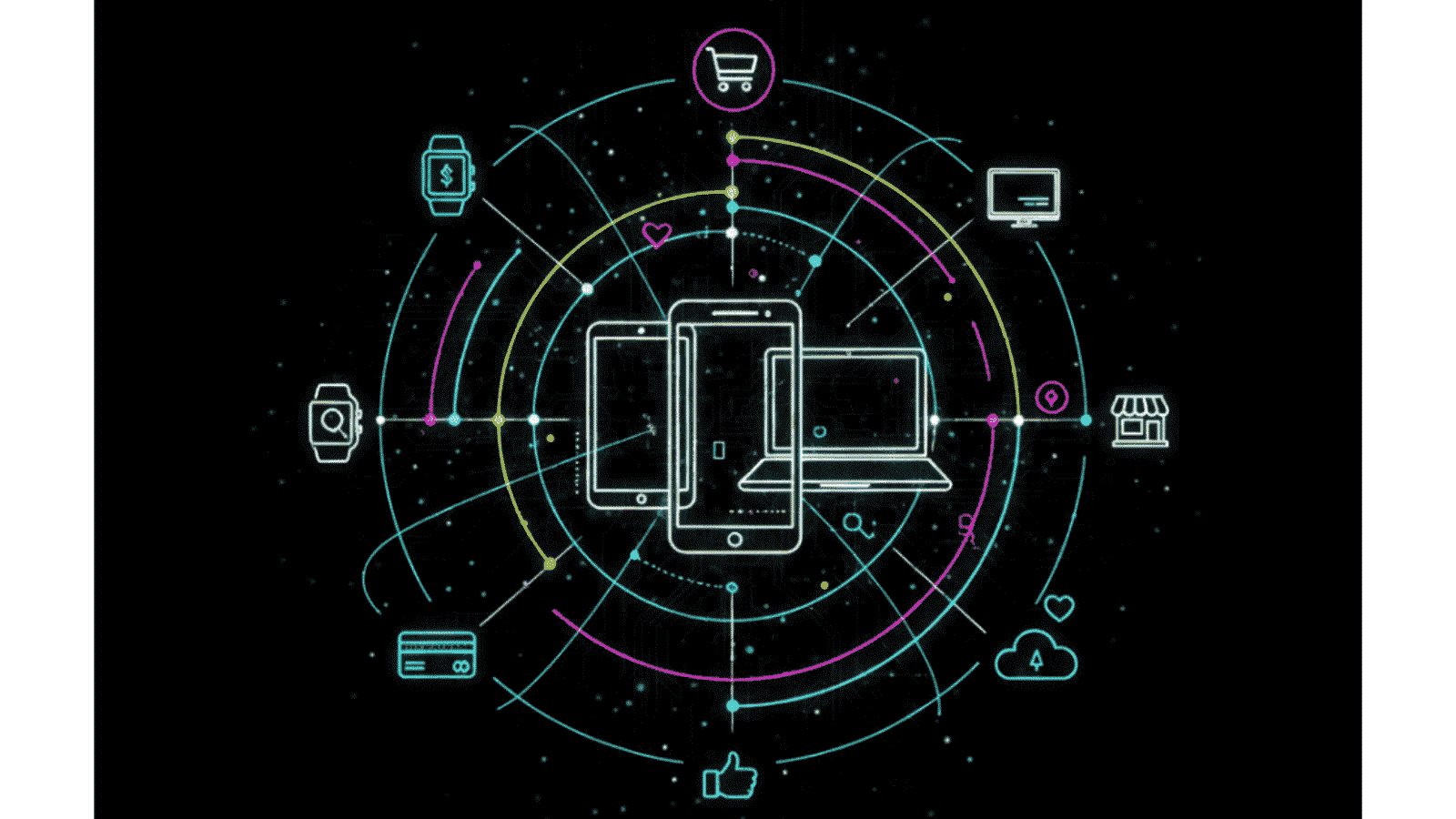Most ecommerce brands fail to hit their stride—not because their products lack quality, but because they misunderstand the people they’re trying to serve. Research shows that 70% of consumers abandon a brand after just two negative experiences. A confusing checkout, a slow reply to a question, or an unclear product description can cost you a customer permanently.
Every action a visitor takes reveals their expectations, doubts, and priorities. Minor missteps can shatter trust instantly, while carefully designed interactions turn first-time visitors into loyal buyers. By exploring these 100 hidden buyer behaviors, you’ll uncover what truly drives decisions, giving you the insight to align your store with how customers actually think, feel, and act.
Table of Contents
What is the Meaning of Buyer Facts in a Business?
In business, “buyer facts” refer to the real, observable information about how customers behave, think, and make purchasing decisions. These are insights based on actual behavior, patterns, and motivations.
Key aspects include:
- Buying behavior: What products they prefer, how often they buy, and what influences their decisions.
- Motivations and triggers: Emotional or rational factors that prompt them to purchase (e.g., trust, urgency, convenience).
- Barriers and objections: Reasons why a customer might hesitate or abandon a purchase.
- Preferences: How they like to interact with a brand—online vs. offline, mobile vs. desktop, social media habits, etc.
In short, buyer facts help companies understand their customers far better than they could without these insights, enabling your ecommerce brand to design products, experiences, and marketing that truly resonate.
How Knowing Your Buyers Can Transform Your Business
Here are 10 uses of knowing buyer facts, each from a practical perspective:
- Personalize Marketing – Tailor offers, messaging, and campaigns based on actual buyer preferences.
- Increase Conversion Rates – Understand decision-making patterns to optimize product pages and checkout.
- Improve Product Development – Design or refine products that match real customer needs and desires.
- Enhance Customer Retention – Anticipate repeat-purchase behavior and implement loyalty strategies.
- Optimize Pricing Strategy – Price products according to what buyers perceive as fair value.
- Reduce Cart Abandonment – Identify buyer hesitations and remove barriers to purchase.
- Boost Advertising ROI – Target ads to the right segments based on purchase behavior and interests.
- Refine Content Strategy – Create content that resonates with buyer motivations and pain points.
- Predict Market Trends – Use insights from buyer behavior to anticipate emerging demands.
- Strengthen Customer Experience – Align every interaction with buyer expectations to build trust.
100 Ecommerce Buyer Facts to Understand for Your Brand Growth
A. Ecommerce Buyer Facts On Website Usability & Navigation
- Buyers subconsciously test the website by searching for errors before trusting it.
- They mentally rank your website’s “effort to buy” before price.
- Buyers pause scrolling if the website has inconsistent font styles.
- Breadcrumb trails increase comfort and reduce hesitation.
- They test search functionality with vague queries to check relevance.
- Buyers notice if product filters are logical or random.
- They silently evaluate site hierarchy for ease of navigation.
- Website scroll behavior affects subconscious trust.
- They notice broken links subconsciously, even if they don’t click them.
- First-time buyers mentally assess website hierarchy for clarity of information.
B. Ecommerce Buyer Facts On Trust & Credibility
- Presence of live chat, even if unused, increases perceived security.
- They notice subtle inconsistencies in brand tone between pages.
- Buyers assign “risk points” to every extra step in checkout.
- Missing FAQ sections create doubt even if other trust elements exist.
- Buyers silently judge trust badges for authenticity.
- Subtle grammatical errors reduce trust subconsciously.
- They silently evaluate URL structure for professionalism.
- Buyers notice if contact info is complete versus minimal.
- Frequent site updates signal credibility; stale content reduces trust.
- Buyers mentally score your site on perceived honesty.
C. Ecommerce Buyer Facts On Product Perception & Authenticity
- Buyers imagine the product in their life scenario before checking specs.
- Some create multiple wishlists to evaluate urgency and scarcity.
- They evaluate product images for authenticity, not just clarity.
- Buyers pause at product “badges” like “Best Seller” to validate credibility.
- First-time buyers intentionally read negative reviews for honesty.
- Buyers notice secondary images showing real-world product use.
- They evaluate product description tone for naturalness versus formulaic writing.
- Product videos with human presence are preferred over animations.
- They judge packaging potential from stock photo settings.
- Buyers notice if product ratings match the number of reviews.
D. Ecommerce Buyer Facts On Checkout & Payment Experience
- Buyers test different payment options to feel flexibility.
- Microcopy on buttons like “Add to Cart” vs. “Buy Now” affects mindset.
- Buyers mentally calculate total cost with shipping before adding to cart.
- Checkout design consistency across pages affects trust.
- They notice if extra steps are needed and penalize effort subconsciously.
- Subtle urgency messages in checkout influence decisions.
- Buyers silently calculate “how long till I get it” before committing.
- Payment page security symbols impact subconscious trust.
- They notice if checkout forms are minimal or overwhelming.
- They evaluate the ease of leaving without completing purchase.
E. Ecommerce Buyer Facts On Shipping & Returns
- Buyers mentally calculate effort to return or exchange before buying.
- They compare delivery promises against competitors.
- Return/Refund policies influence trust even if not read fully.
- Shipping transparency reduces cart abandonment.
- Phrasing of stock availability (e.g., “only 2 left”) affects urgency.
- They notice if shipping info appears too late in the funnel.
- Buyers notice delivery speed mentioned across pages.
- They infer risk from packaging quality shown in images.
- They evaluate clarity of return steps and refunds.
- First-time buyers check if stores exist physically for reassurance.
F. Ecommerce Buyer Facts On Social Proof & Reviews
- Buyers pause at negative reviews to gauge honesty.
- Customer photos are noticed and increase trust.
- They notice timestamps on reviews, which affect transparency.
- Review relevance impacts perception of product reliability.
- Buyers judge if reviews feel curated or authentic.
- First-person product stories are preferred over generic testimonials.
- Product recommendation sections are evaluated for subtle authenticity.
- Trust indicators in reviews are judged visually as well as textually.
- Buyers notice if social proof aligns with the product description.
- They mentally benchmark your reviews against competitors.
G. Ecommerce Buyer Facts On Visual & UX Details
- Buyers notice font, spacing, and alignment subconsciously.
- Hover effects and micro-interactions influence trust.
- Image load speed versus text load speed affects perception.
- Smooth scrolling versus jumpy scrolling impacts comfort.
- Inconsistent color shades across images are subconsciously penalized.
- Alt text presence affects perceived professionalism.
- Visual hierarchy on product pages affects clarity.
- Minimalistic design in checkout increases trust subconsciously.
- Button placement and design are noticed for intuitiveness.
- Product images in real-world contexts influence perceived authenticity.
H. Ecommerce Buyer Facts On Cognitive & Behavioral Patterns
- Buyers mentally rank products before comparing prices.
- They subconsciously test if site over-promotes or oversells.
- Subtle cues like rounded pricing versus odd numbers influence perception.
- They mentally calculate effort for each action before adding to cart.
- Buyers often pause to mentally evaluate product risk versus benefit.
- They notice if microcopy is human or robotic.
- Buyers evaluate mental effort needed to find answers.
- They mentally assign credibility scores to each page.
- First-time buyers revisit homepages multiple times to feel familiarity.
- They notice inconsistencies in promotional messaging.
- They notice if interactive elements respond instantly or lag.
- Buyers evaluate how intuitive “compare” or selection options are.
- They notice if pages encourage natural exploration versus forcing choices.
- Subtle urgency and scarcity messages are subconsciously interpreted for authenticity.
- Buyers mentally test website load speed versus expected performance.
- They notice if promotional pop-ups are easily dismissible.
- They subconsciously prefer flexibility in product options.
- They notice if typography and headings are clear and consistent.
- Buyers evaluate whether product page length is balanced.
- They notice if product images show realistic detail.
- Buyers mentally score consistency between marketing and product reality.
- They assess website updates frequency as a credibility signal.
- Subtle trust micro-interactions, like hover responses, are noticed.
- They mentally rank the ease of the purchase decision.
- Buyers notice if “return to previous step” flows naturally.
- They assess emotional comfort during first browsing session.
- They notice small UX inconsistencies as potential red flags.
- Subtle differences in copy tone affect their trust score.
- They notice if social media presence feels aligned with product.
- Buyers silently assess overall “mental friction” before final decision.
If you want your business to really grow, understanding your buyers is everything. Every customer has their own habits and preferences, and most of these go unnoticed. By learning to decode new buyers’ preferences and paying attention to key ecommerce buyer facts, you can give them exactly what they want, make them feel understood, and boost your sales. It’s all about turning first-time visitors into repeat customers and giving your brand a real edge over the competition.
| Category | Core Insight | Actionable Strategy / High-Impact Tactic |
|---|---|---|
| Website Usability & Navigation | Buyers mentally rank “effort to buy” and test site intuitively. | Simplify navigation, use clear menus, minimize clicks to checkout, optimize search & filters. |
| They notice broken links, odd hierarchy, confusing layouts. | Audit site for broken links, logical page structure, and breadcrumb trails. | |
| Breadcrumbs & hierarchy reduce hesitation. | Implement clear breadcrumbs & logical H1/H2 structure for guidance. | |
| Trust & Credibility | Subtle inconsistencies in tone, errors, and missing info reduce trust. | Maintain consistent copy, proofread content, display complete contact info. |
| Live chat presence increases security perception. | Offer live chat or visible support option, even if rarely used. | |
| Trust badges, URL, updates signal credibility. | Add verified trust badges, keep site updated, use professional URLs. | |
| Product Perception & Authenticity | Buyers evaluate authenticity of images, videos, and badges. | Use real photos, human videos, highlight real-world usage, include subtle badges like “verified buyer.” |
| Buyers read negative reviews for honesty. | Display honest, mixed reviews; avoid over-curation. | |
| Product description tone affects trust. | Write clear, natural, human-focused descriptions. | |
| Checkout & Payment Experience | Microcopy and flow affect subconscious confidence. | Test CTAs, minimize checkout steps, maintain consistent page design. |
| Buyers calculate total cost & effort before committing. | Display clear pricing, transparent shipping, and optional payment flexibility. | |
| Security cues & ease-of-exit reduce hesitation. | Include payment security logos & allow easy navigation back/exit options. | |
| Shipping & Returns | Perceived difficulty of returns affects buying. | Clearly display return/refund policies, emphasize ease and transparency. |
| Shipping timing and costs influence trust. | Show shipping times upfront, offer free or transparent shipping. | |
| Scarcity & urgency cues like low stock increase action. | Use believable urgency messaging like “only 2 left.” | |
| Social Proof & Reviews | Authentic reviews & images build credibility. | Show customer photos, timestamps, and first-person stories. |
| Recommendation sections need subtle authenticity. | Ensure AI/recommendation engines feel natural, not forced. | |
| Buyers compare reviews across competitors. | Encourage honest, detailed reviews, avoid inflated ratings. | |
| Visual & UX Details | Micro-interactions, font, spacing, and color matter subconsciously. | Optimize hover effects, spacing, color consistency, smooth scrolling. |
| Image load speed and realistic imagery affect perception. | Compress images, show multiple real-world angles, add alt text. | |
| Button placement, checkout design, and hierarchy are evaluated instinctively. | Standardize CTA placement, simplify checkout, maintain consistent UI. | |
| Cognitive & Behavioral Patterns | Mental effort & friction dominate subconscious decision-making. | Reduce cognitive load: fewer steps, clear CTAs, visible progress bars. |
| Subtle copy tone, urgency, and scarcity cues impact trust. | Use authentic urgency/scarcity without overhyping; humanize copy. | |
| Repeated exposure increases familiarity. | Encourage return visits via retargeting, email reminders, and gentle prompts. |
Wrap-up Note
Getting a handle on ecommerce buyer facts isn’t merely useful, it’s crucial for any brand preparing to succeed in a complex, ever evolving market. These insights reveal the real motivations, risk signals, and trust signs that directs every purchasing decision. When you identify what truly drives behavior, you can design experiences that not only engage first time visitors but also convert them into committed, repeat customers. Applying these facts strategically replaces speculation with precision, providing your brand a tangible advantage and the confidence to launch with clarity and impact.


